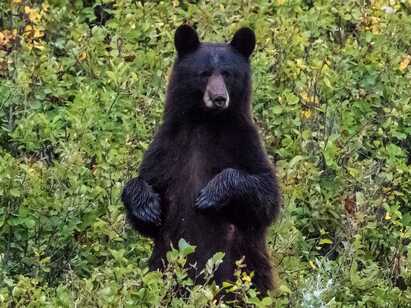|
11/11/2020 1 Comment Black Bear Hibernation Black bears live throughout the Reno-Lake Tahoe area. They spend their summers foraging for bugs, fruit, roots, fish, and small animals. In the fall, as it gets colder, and their food sources begin to disappear, they have to enter a form of long-term deep sleep called hibernation. This process starts much earlier than when they actually go into a den and go to sleep. As temperatures begin to drop and days shorten in early fall, bears go into a state of hyperphagia. “Hyper” means a lot or excessive and “phagia” means to eat. Bears have to fatten up to store enough fat and energy in their bodies to get through the winter. In the Tahoe area the Kokanee salmon runs in fall help immensely with this process, providing a lot of fat and protein. During this period, bears often forage and eat for 20 hours a day! One of the main indicators for birds to enter hibernation is a lack of food, so please don’t provide food for bears; bear-proof your home and trash cans. Bears in the Reno-Tahoe area often begin hibernating around Thanksgiving but this varies based on weather. Since this year has been warm, they may enter hibernation later. When the time comes, they go into their dens and often don’t come out for several months! Adult females often produce cubs during this period if conditions are good. We’ll be saying goodbye to our bear friends soon, and will await their return in the spring.
1 Comment
|
AuthorThis blog is managed by the staff and volunteers of Galena Creek Visitor Center. We write about parts of the natural world that we find fascinating and want to teach others about, as well as keeping you updated on the Visitor Center and park. If you want to learn more, please sign up for our monthly newsletter, where we share upcoming events, updates on the ecology of the park, and highlights from each month. Archives
October 2021
Categories |
 RSS Feed
RSS Feed
